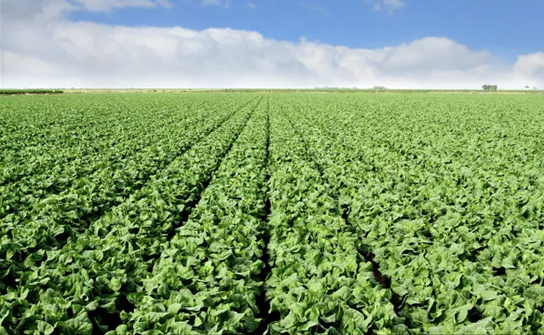 June-14-2023
June-14-2023
View: 10

The cultivation of Kai Lan on farms in Mexico and California exemplifies the adaptability of this versatile vegetable.
Cultivating Gai Lan (Kai Lan) Vegetable: A Tale of Farming in Mexico and California
Introduction: Kai Lan, also known as Chinese kale or Chinese broccoli, is a nutritious and flavorful vegetable widely celebrated in Chinese and Cantonese cuisines. This leafy green delights in cool weather and offers a range of culinary possibilities. With its preference for rich, moist, well-drained soil and its adaptability to container gardening, Kai Lan can thrive in diverse agricultural settings. In this article, we explore the art of growing Kai Lan on farms in Mexico and California, highlighting the specific conditions and practices that yield a successful harvest.
Soil Preparation: Kai Lan flourishes in soil that is rich in organic matter. Prior to planting, it is crucial to amend the soil with compost or well-rotted manure to enhance its fertility. In both Mexico and California, farmers meticulously prepare the soil, ensuring it is loose, well-drained, and adequately nourished.
Planting: In open-ground cultivation, seeds of Kai Lan can be sown directly into well-prepared beds. The seeds should be planted at a depth of about half an inch and spaced 12-18 inches apart to allow proper growth and development. Alternatively, farmers can opt for large containers, providing an ideal environment for Kai Lan cultivation.
Climate Considerations: Kai Lan thrives in cool weather and can tolerate light frosts. This makes it suitable for cultivation in regions with mild winters, such as certain parts of Mexico and California. The vegetable benefits from some protection during winter, ensuring continuous growth and a bountiful harvest.
Watering and Weed Management: To ensure optimal growth, Kai Lan requires consistent watering, particularly during dry weather. Adequate moisture is vital to prevent the soil from drying out. Farmers in Mexico and California diligently monitor soil moisture levels, providing sufficient irrigation when needed. Moreover, regular weeding is essential to prevent competition for nutrients and to maintain the health and vigor of the plants.
Pest and Disease Management: Protecting the Kai Lan crop from pests and diseases is essential for a successful harvest. The use of nets can help prevent damage caused by birds and caterpillars. Farmers in Mexico and California employ integrated pest management techniques to address potential threats and minimize the need for chemical interventions.
Harvesting and Flavor: Kai Lan is a quick-growing vegetable, with a harvest period of around 60-70 days. It is best to harvest the plants just as the flower heads begin to form, ensuring a balance between tenderness and flavor. The vegetable exhibits an excellent taste profile, and its rich, leafy greens lend themselves to a variety of culinary preparations, including stir-fries, soups, and salads.
Conclusion: The cultivation of Kai Lan on farms in Mexico and California exemplifies the adaptability of this versatile vegetable. From soil preparation to harvesting, farmers in these regions apply meticulous care and attention to nurture thriving Kai Lan crops. The rich, moist soil and the favorable climate in these areas provide an ideal environment for the cultivation of this cherished Chinese vegetable. By embracing the art of growing Kai Lan, farmers in Mexico and California contribute to the diversity and culinary delight of their local communities.